You might have never heard of Ulsan. In ye olden days, the city was known for whaling. Fortunately, all that’s left of this kind of animal cruelty is a whale museum and some memorabilia at the former whaling village Jangsaengpo.
Today, Ulsan prides itself on being the home to the world’s largest single industrial plant. Hyundai Industries consists of five independent factories with a total of approximately 32,000 employees. And while this is pretty impressive, I totally understand when it doesn’t sound like a good reason to squeeze a day in Ulsan into your already very tight itinerary for South Korea.
But wait, not so fast: In this post, I’ll give you three proper reasons why a visit to the underrated city of Ulsan is absolutely worth your while.
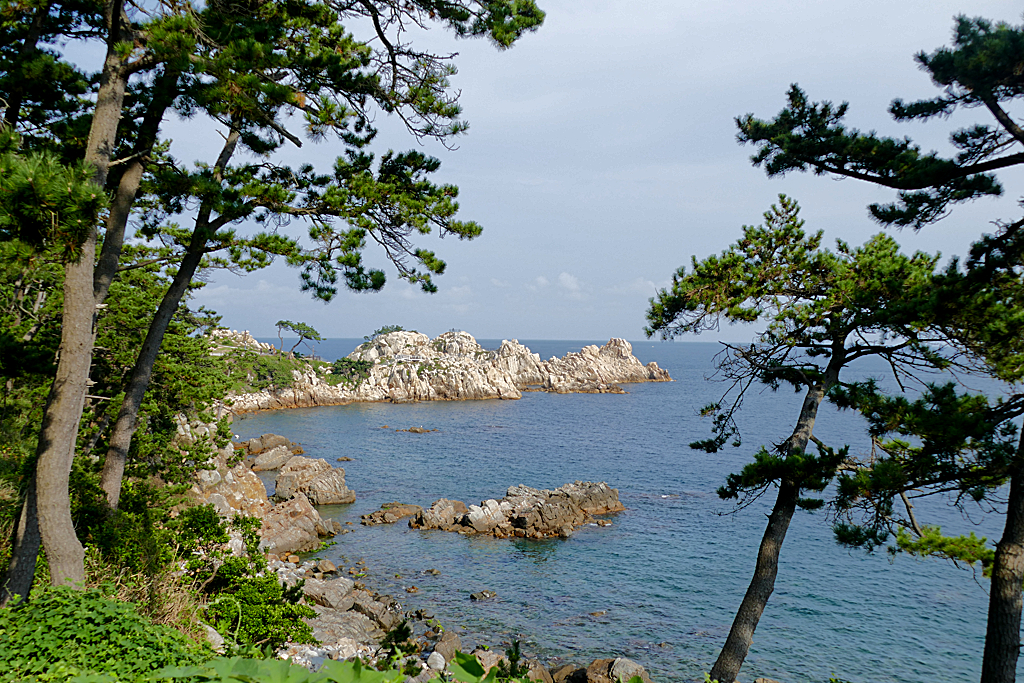
Three Reasons to Visit Ulsan
Am I an explorer? An elderly girl scout? Why else did I visit one of Korea’s least touristy places? The truth is that Ulsan only made it onto my list of must-sees because I really wanted to visit a bamboo forest. The detour to Korea’s most famous forest in Damyang was too much effort for me, and with a little research, I found out that there is a beautiful park with a stately bamboo forest right in the heart of Ulsan. And since the city was on my route from Busan to Gyeongju anyway, there was no reason not to spend one night there.
On the contrary: As it turns out, there are many reasons for not skipping Ulsan!
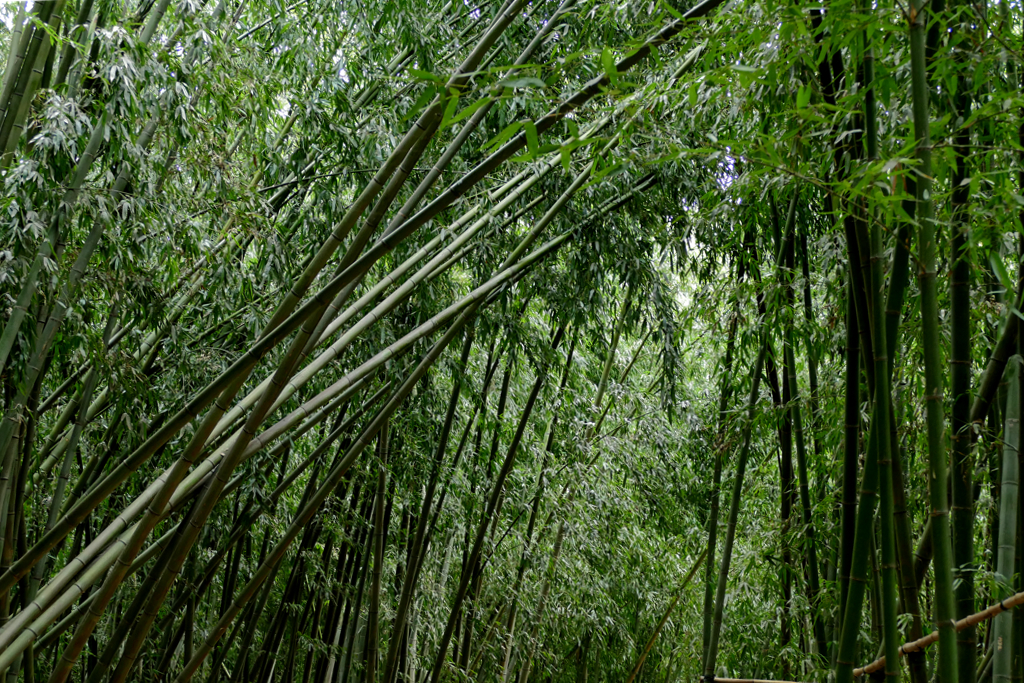
Ulsan is an industrial city on Korea’s southeastern coast and lies only about 70 kilometers north of Busan. With around one million inhabitants, it is only the country’s seventh-largest city. Nevertheless, it is the metropolis with the highest per capita income in all of Korea!
This is due to large industry plants, obviously. Ulsan has major oil refineries and fertilizer factories. However, it is also home to the world’s largest single industrial plant Hyundai Industries where cars, but also the largest container ships in the world, are being built.
It’s not surprising that these kinds of superlatives take their toll. In the 1980s, pollution was so bad that the Taehwa River, which flows across the city and then into Ulsan Bay, was nicknamed the River of Death.
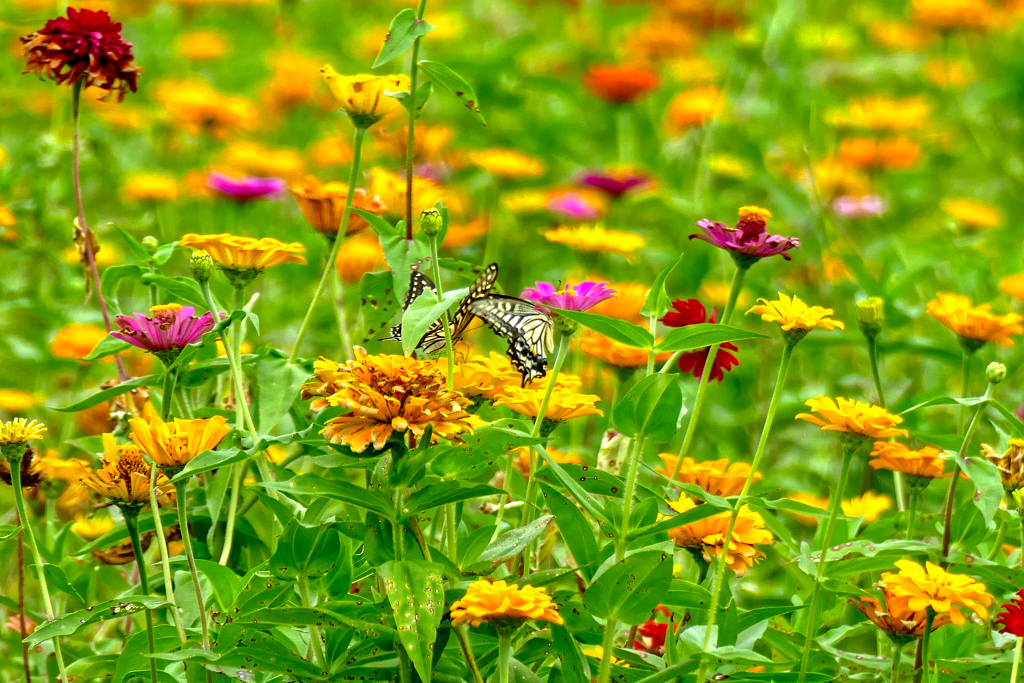
Since then, the city administration has invested great effort in cleaning and beautifying the stream and its surroundings. Today, it is actually a refuge for salmon and migratory birds. The city, which was notorious for its heavy industry, has miraculously been able to optimize its ecological focus.
Bamboo
In fact, the former River of Death has become a lifeline, as it currently forms an important source of drinking water for the citizens of Ulsan.

Conservation efforts resulted in converting a wild area on the northern bank into the Taehwagang National Garden.
This 840,000 square meter complex is a nature reserve, a beautiful local recreation area, and a green lung for Ulsan’s citizens and visitors alike. The green space is more than twice the size of Yeouido Park in Seoul. It consists of natural water, beautiful flowers, as well as rapeseed and fodder barley fields.
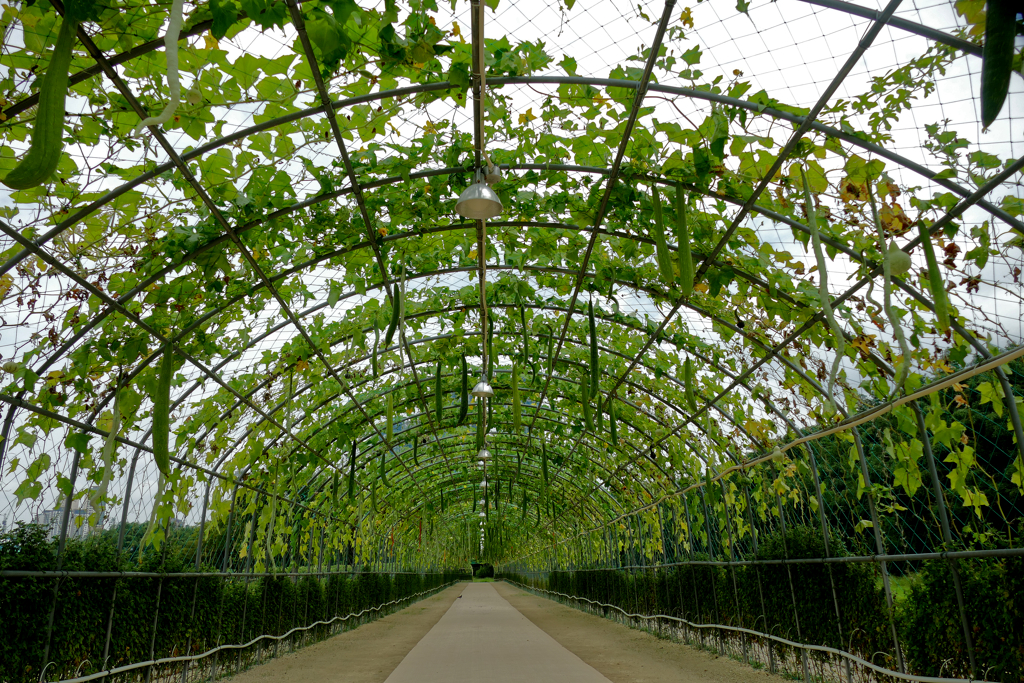
The gardens are particularly beautiful in spring when the various plant species such as poppies, cornflowers, and golden coreopsis are blossoming. As a matter of fact, the park boasts the most extensive selection of flowering river plants in the country. It is a true garden Eden for every nature lover.
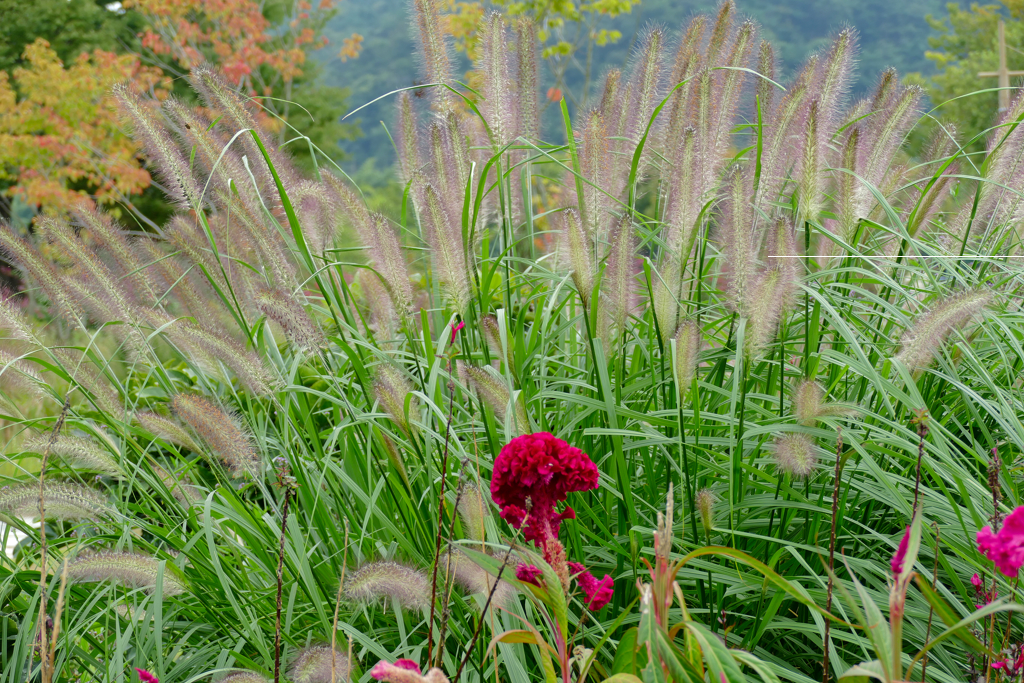
The by far most important attraction, however, is the Simni Bamboo Grove. This dense bamboo forest stretches for about 4 kilometers alongside the river.
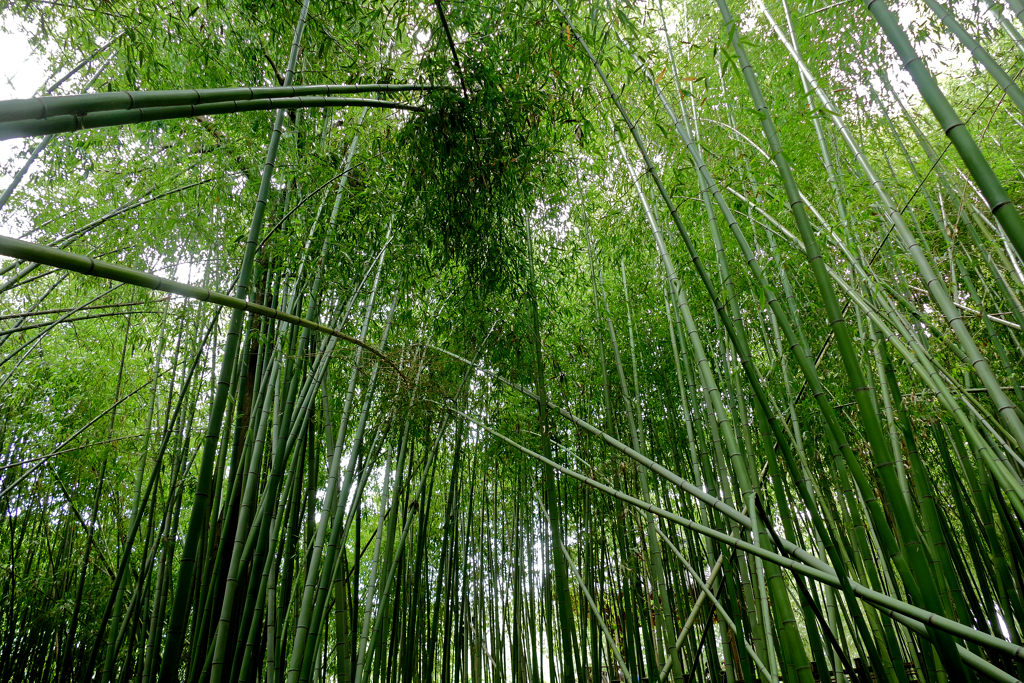
It was planted during the Japanese colonial period to protect surrounding areas from flooding. Today, it is a wonderful oasis that invites you to take a contemplative stroll. Many Koreans also cross it barefoot and at a brisk pace as a healthy exercise.
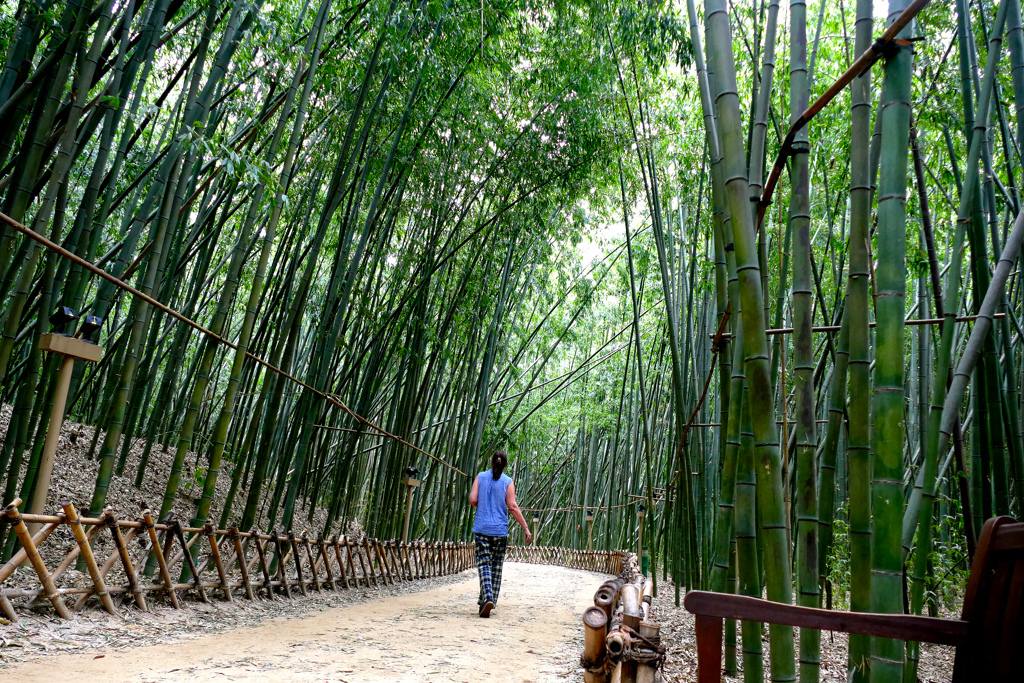
And when a place in Korea is particularly beautiful, the K-drama film crews are not far away. The dramas Curtain Call, Once Again, and The King – Eternal Monarch were filmed in Taehwagang National Garden.

The gardens are accessible 24 hours a day, free of charge.
Beaches
The famous Ilsan Beach is located on Ulsan’s east coast. It is a fine sandy beach, but only approximately 600 meters long. The water is rather shallow, only one to two meters deep. As it reaches a temperature of around 22 degrees Celsius in the summer months, it is a perfect place for a beach day with the whole family.
Ilsan offers various facilities. There are shops, restaurants, and accommodations in the area. All of this grants a comfortable and pleasant day at the beach.
If you need a change of scenery, Daewangam Park is quickly and easily reachable on foot. The Ulsan Bridge Observatory is also nearby.
Bridges
Although I initially came to Ulsan for the Bamboo Forest, Daewangam Park became my favorite spot in the city.
Daewangam Park is a large greenery located on Ulsan’s east coast. Idyllic walking trails pass through a pine forest. There are cherry and apricot trees, magnolias, camellias, and forsythia. One of the park’s most iconic features, however, is Daewangam Rock.
I’m Legend
The creation of the park and the rock of Daewangam, which translates to Rock of the Great King, goes back to a 1000-year-old mythology: At the end of the 7th century, King Munmu of the Silla Empire united all three Korean kingdoms for the first time. He wished to mutate into a dragon after his death so that he could protect the country from attacks.
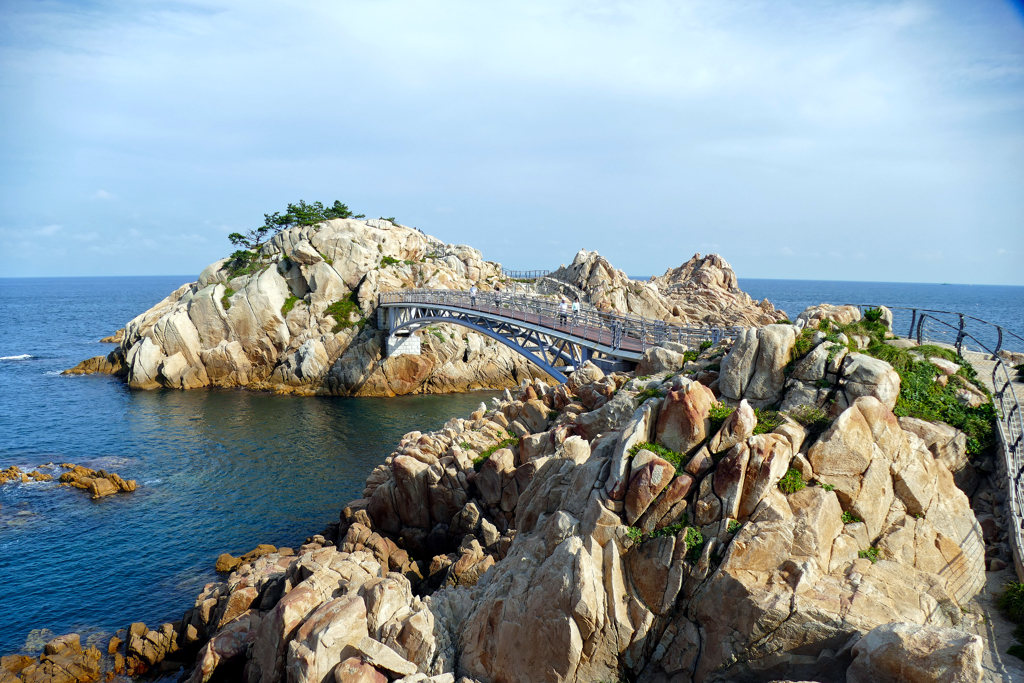
His wife, the Queen of Munmu, followed his example and requested to be buried on the coast after her death. There she would protect the empire as a dragon. So legend has it that she is buried at Daewangam just a few hundred meters off the shore.
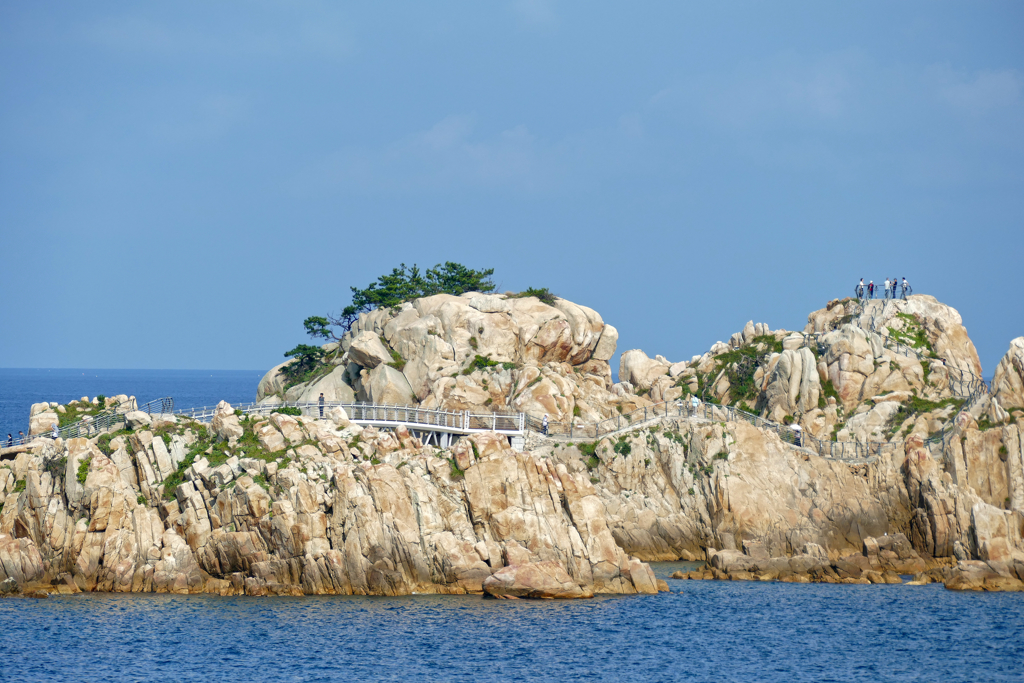
You can enter the rock via a bridge and enjoy the view of the open area. Although her grave has never been found, some of the surrounding stone formations actually do resemble dragons.
Already on the way to the Royal Rock, you are granted wonderful views of the coast and at the cliffs washed by rough waves.
Shine a Light
On the mainland right behind the Daewangam, there is a small lighthouse on a hill. The Japanese occupiers built it more than 100 years ago and named it Ulgi.
The lighthouse, which is only 6 meters high, has not been visible from the sea for several decades as the tall pine trees block the view. Therefore, in 1987, another much taller lighthouse was built just 50 meters away.
The small lighthouse, however, is now a registered cultural heritage site. You can also see it – how could it be any different in Korea? – in a K-drama, namely To All Guys Who Loved Me.
Crossing the Bridge
Actually, I have long been notorious for my completely irrational fear of heights. But something has changed in recent years. It gets better. I can now ride cable cars without being close to a heart attack. I can even look out of the cabin’s windows. In many Korean cities, I not only climbed high observation towers, but I also managed to actually enjoy the views.
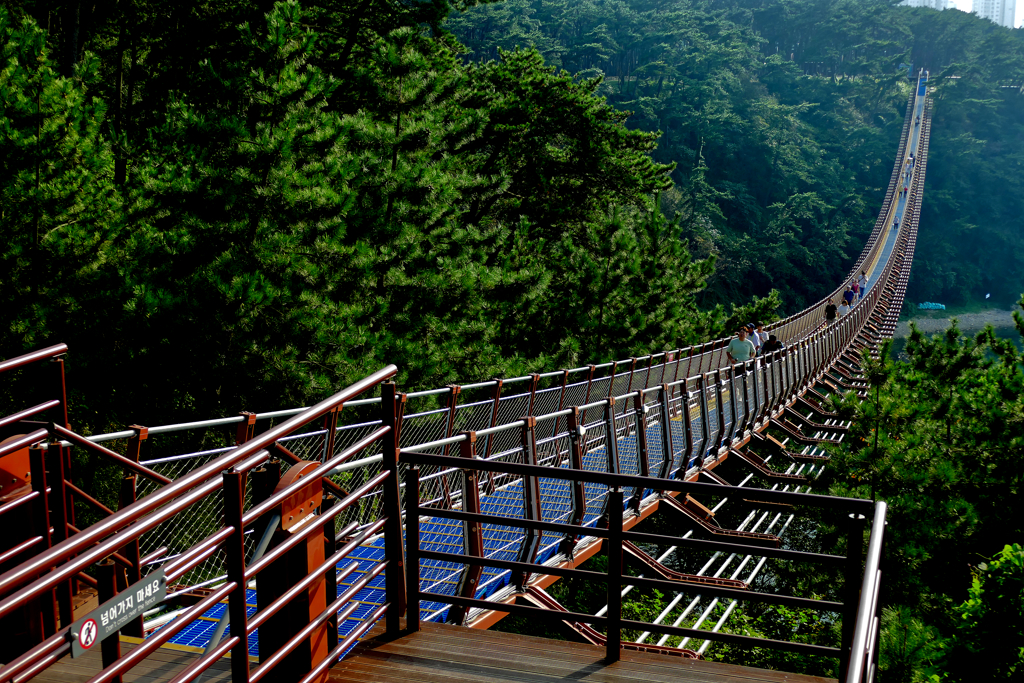
Nevertheless, I was still convinced that I would not be able to walk across the Daewangam Park Suspension Bridge. There is a limit, after all.
Walking across the sea on 303 meters? No way, Jose!
“You don’t need to count me, I just want to take a quick photo,” I therefore told the lady who was counting the visitors at the bridge entrance with one of those small clicking counting devices.
I Dare Myself
I stood at the entrance to the bridge and took the first photos. Suddenly, I found the idea of having photos of a bridge that I have actually never crossed myself really stupid. Come on, get out of your comfort zone and onto the bridge! What can go wrong? It’s all just in your head.
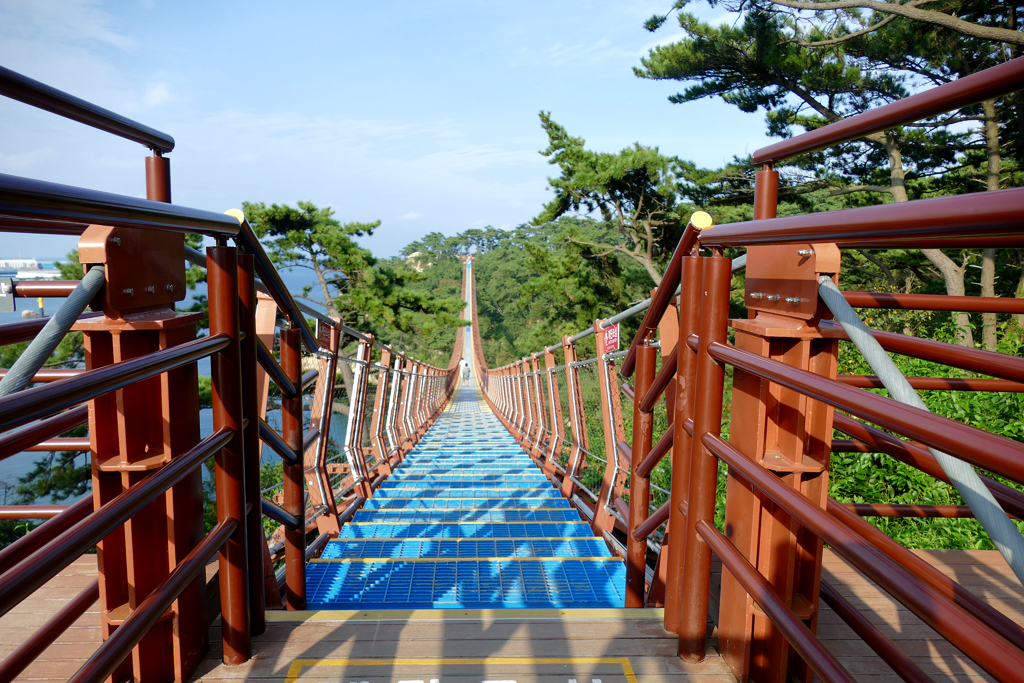
Before I could even finish the thought, I was already a few meters onto the narrow footbridge. Staring at the back of a gentleman dressed in an eggshell-colored suit, muttering encouraging mantras to myself, I took one step in front of the next as if remotely controlled. It felt terrible. And at the same time, it felt great! I had actually faced my fear.
I was so proud of myself!
Then, after 303 meters of crossing, I was also happy to have solid ground under my feet again.
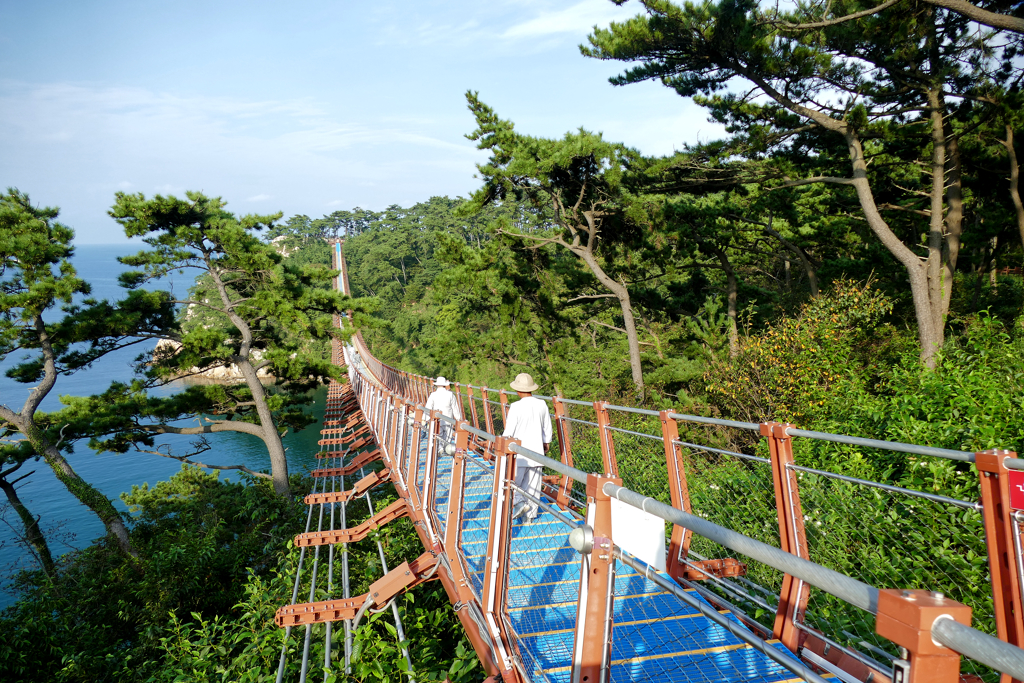
The Daewangam Park Suspension Bridge connects the Hatgaebi and Surubang coastal paths and is currently the longest suspension bridge in all of Korea.
The park is open every day from 9 a.m. to 6 p.m.
Practical Information
As Ulsan was just kind of a pit stop between Busan and Gyeongju, I keep this info section short. I’m telling you how to get there and around and where to stay, but that’s about it. However, you’ll find extended information in the general post on South Korea as well as in some of the more extended posts on individual places such as Jeonju, Gyeongju, Busan, and Seoul, obviously.
How to Get There
Plane
It might come to your surprise that the rather unknown city of Ulsan actually has an airport. But don’t forget that it is one of Korea’s most important industrial cities. However, at present, there are only two domestic flights from Ulsan. One goes to Seoul, the other one to Jeju Island.
Ulsan’s airport is about seven kilometers from the city center. Going there takes about 20 minutes by cab and sets you back around 10,000 ₩on. However, you can also go there by regular as well as by express bus.
Train
Ulsan has connections to the KTX express train network, however, Ulsan train station is about 24 kilometers west of the city center. Hence, if you’re not going to Seoul or Daegu, you are definitely better off taking the bus.
If you are going South to Busan, you can take the regional train at the Taehwagang train station which is very centrally located.
You can buy tickets at the railway station from vending machines as well as real people and supposedly on the internet. Nevertheless, some fellow travellers told me that they couldn’t pay with their international credit cards. I don’t know since I always bought my tickets before departure at the station.
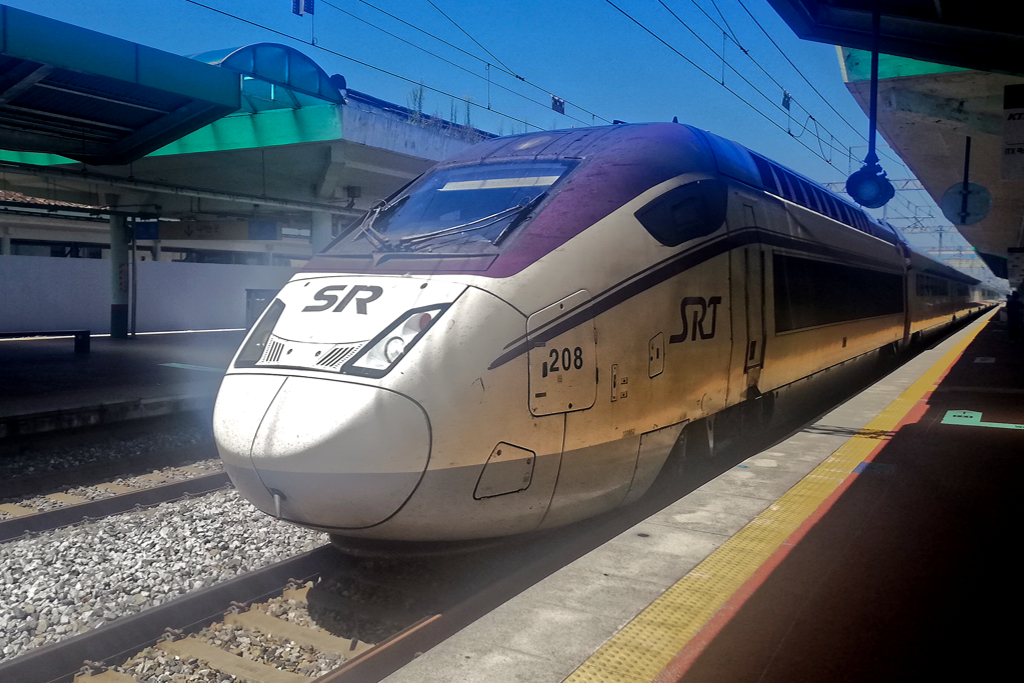
Obviously, train tickets – even those for the KTX bullet train – cost just a fraction of airfare, yet the fast trains take you to some destinations in basically the same amount of time.
Bus
As I explained above, if you are going north to Gyeongju or Andong, you’re much better off taking the bus.
Korea’s Express and Intercity buses are a great option. They are fast, clean, and comfortable. Fares vary a bit depending on the bus type and the time of the day. However, in comparison with other countries, they are always rather cheap. My trip from Ulsan to Gyeongju took a bit over one hour and cost less than KR₩ 6,000.
Just like train tickets, you can buy tickets right at the bus terminals from vending machines or very helpful clerks.
How to Get Around
Public Transport
I came to Ulsan from Busan by regional train which took me about one hour and a half and cost next to nothing. Funny enough, in either of the cities, I spent the same amount of time to reach some of the more secluded places of interest.
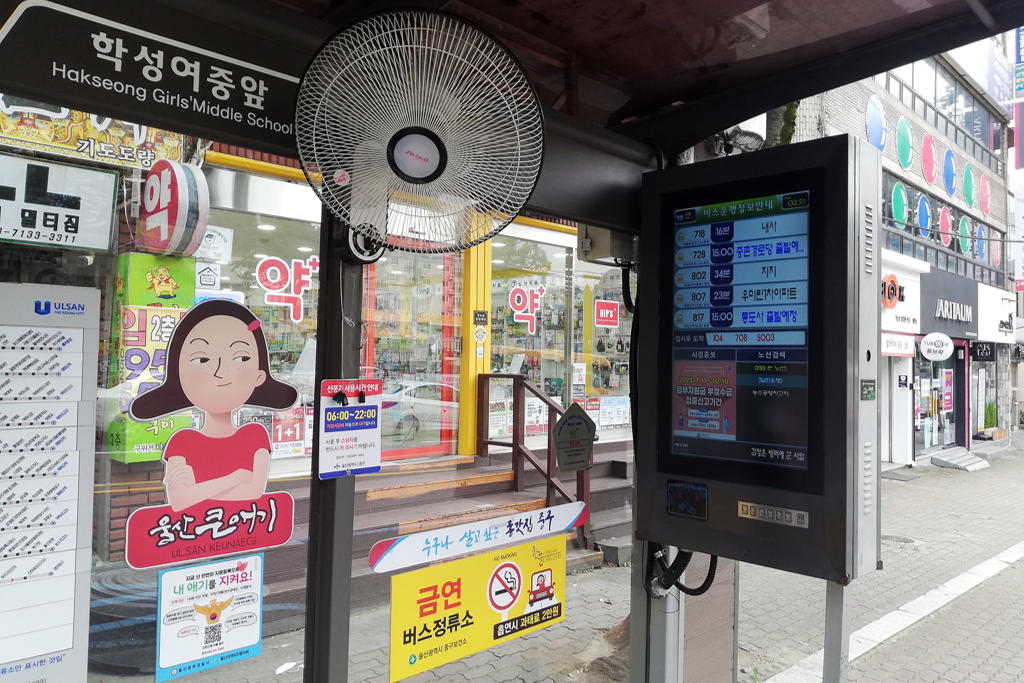
Public transport within Ulsan is as amazing as in any other Korean city despite the fact that there is no subway. However, public buses take you everywhere you want to go easily and comfortably.
Nevertheless, don’t underestimate the size of the city and the time you’ll spend on public transport. It took me about an hour to get from the Taehwagang National Garden to the Daewangam Park.
Walking and Cycling
Exploring the city of Ulsan exclusively by walking or even cycling is not possible. The attractions I’m introducing in this post are almost 20 kilometers apart. Nevertheless, you can ride a bike at the Taehwagang National Garden. The park has beautiful, long, flat walking and cycling paths. Keep in mind that you are not allowed to cycle through the Bamboo Forest, though.
Due to the uneven terrain, it is not possible to ride a bicycle in Daewangam Park. As a matter of fact, both areas are actually rather designated for extended walks.
Visiting Organized
Although I’m an avid solo-travelling woman, I sometimes like to join organized tours. Not only are they a valid option to go to remote places since I’m not driving. They also allow me to meet fellow travellers.
Therefore, here are some great ideas of which tours to join when in Ulsan. Especially during high season, pre-booking online will guarantee your place at the activity of your choice*:
Where to Stay
Although Toyoko* is a soulless chain hotel, it was actually one of the most convenient and comfortable lodging options during my entire trip.
The Toyoko hotels aim rather at business travellers than foreign tourists. Therefore, they have functionally furnished rooms and facilities for long-term stays such as washing machines and simple business centers. You can buy toiletries from machines, and borrowing pajamas is free of charge. The hotel is clearly designed to make life a little easier for business travellers.
In the morning, they serve an amazing complimentary breakfast including many Western foods as well as traditional Korean staples.
So, all in all, if you are looking for a convenient no-frill lodging option, I highly recommend checking in at Toyoko*.
However, if you are looking for something more classic or upscale, you will certainly find it on this map*:
Booking.comMap
On this map, you can see where the wonderful places I’m introducing in this post are located.
Clicking on the slider symbol at the top left or the full-screen icon at the top right will display the whole map including the legend.
Ulsan was only one of many amazing places I visited during my road trip through South Korea and it was just a one-day pitstop between Busan and Gyeongju. To read about the others, go to the main post and take your pick! There, you’ll also find further valuable general information that will make your trip smoother and much more enjoyable. Also, make sure to read my post Individual Solo Trip to KOREA – All Your Questions Answered before you start your planning’n’packing!
Pinnable Pictures
If you choose to pin this post, please use one of these pictures

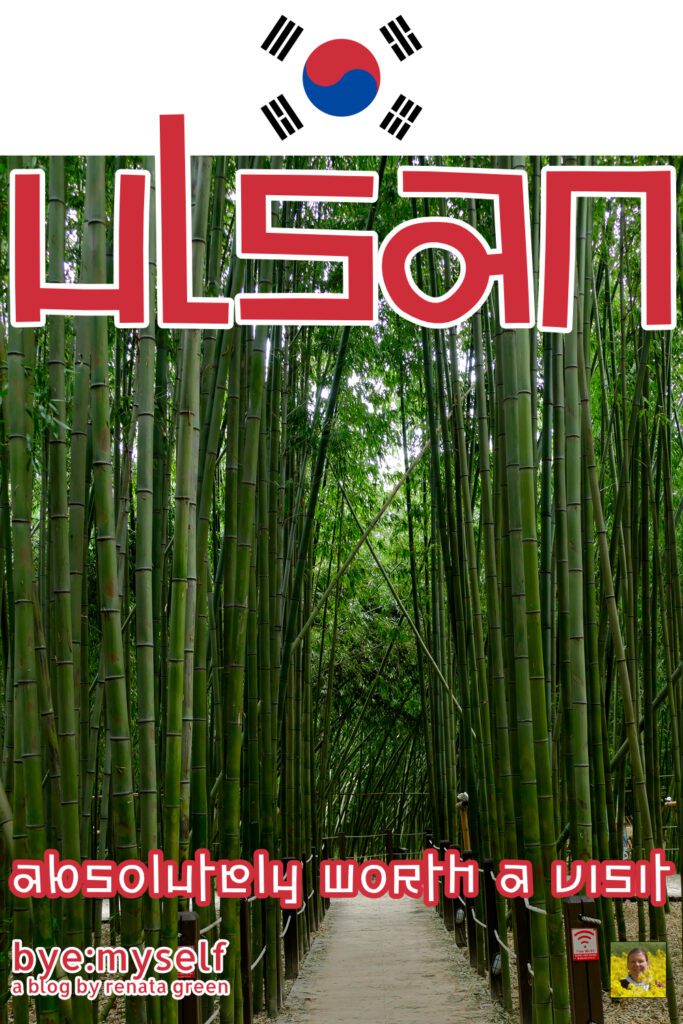
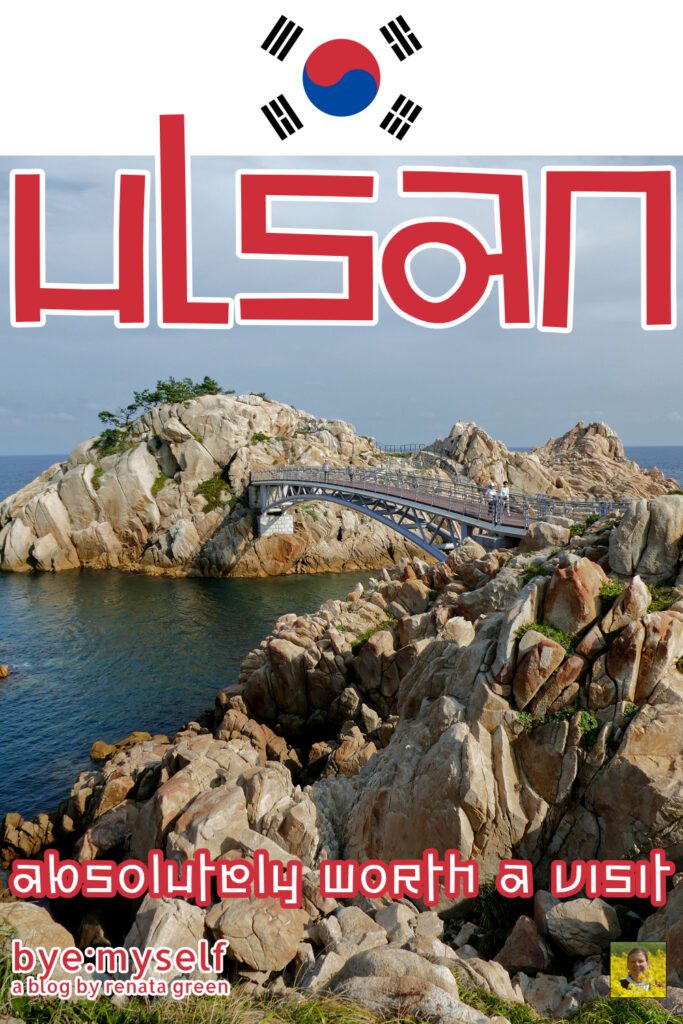
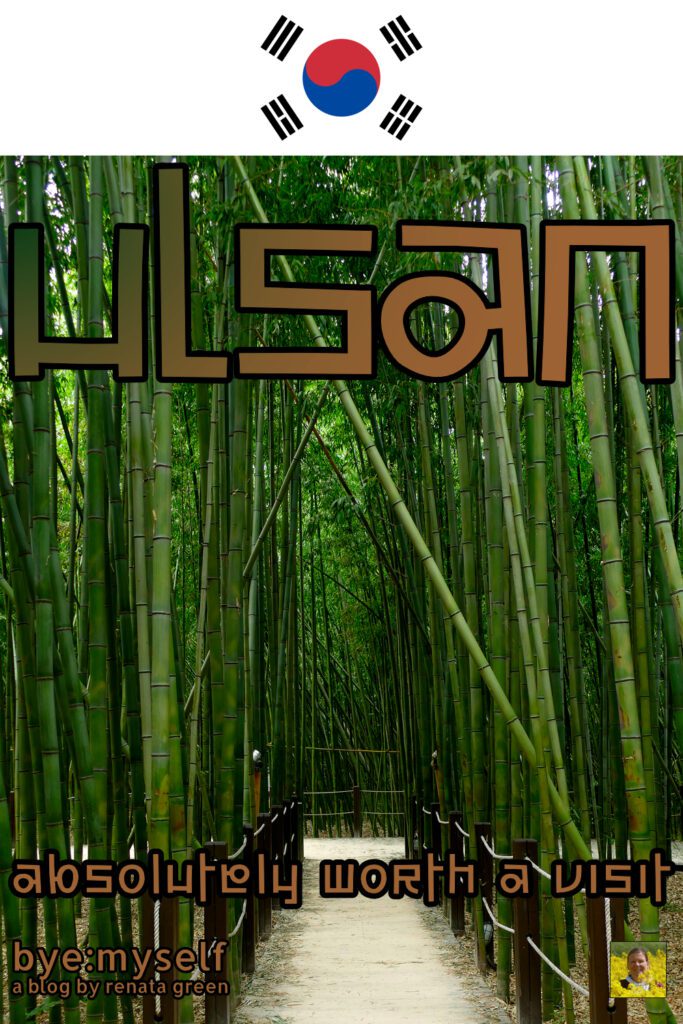
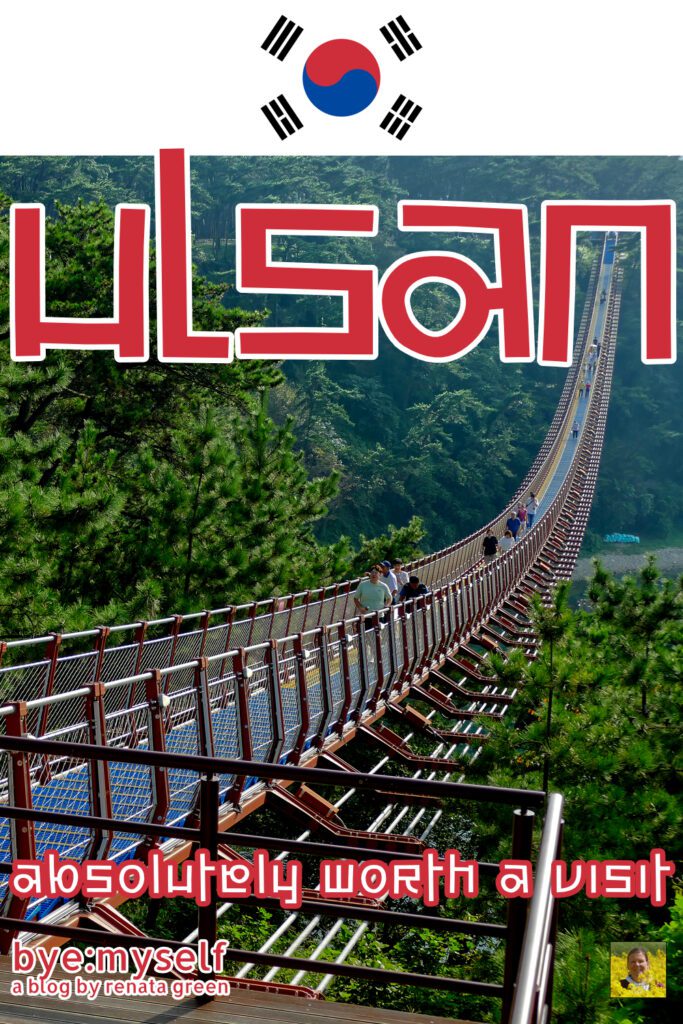
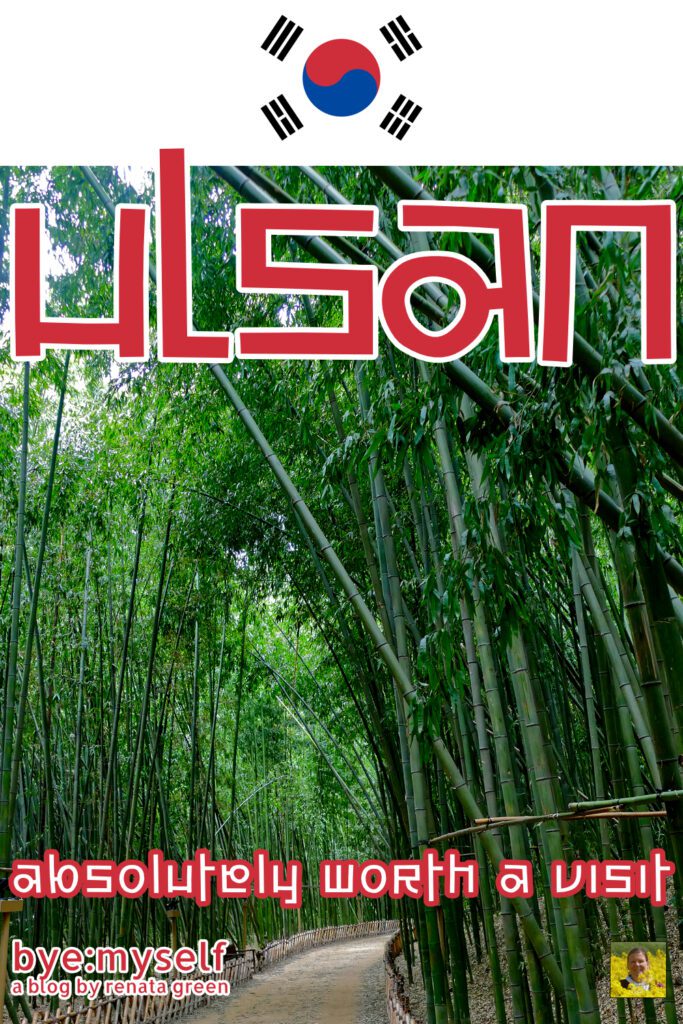
Did You Enjoy This Post? Then You Might Like Also These:
The World’s Largest Mural in Incheon
7 Best And Most Beautiful Coffee Houses in Busan
Grand Tour of SOUTH KOREA – A Guide for Individual First-Time Visitors
How to Experience the Folk Heritage of Korea in ANDONG
JEONJU – Cradle of Korea’s Cultural Heritage and Home to the Country’s Best Food
Mallipo Beach And Chollipo Arboretum: Korea’s Perfect Getaway
Best Things to Do in SEOUL: The Must-Dos And the Hidden Gems
Stroll the Fortress Wall of SUWON
* This is an affiliate link. Hence, If you book through this page, not only do you get the best deal. I also get a small commission that helps me run this blog. Thank you so much for supporting me!



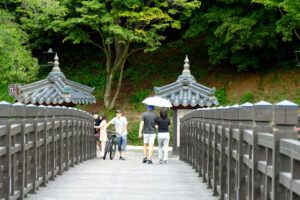
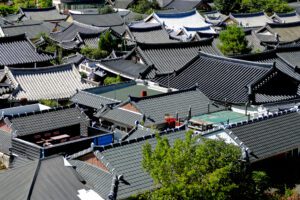

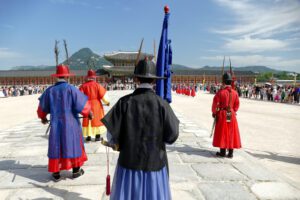
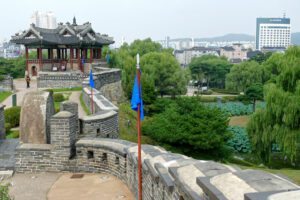
Amazing quest there. Wһаt happened then?
hahaha – furtunately nothing bad. for me, it was a big deal crossing that bridge, though 😉
Ulsan really seems like a hidden gem in South Korea! Your article beautifully highlights its unique mix of industry and nature. The Taehwagang National Garden, with its transformation from an industrial past to a lush green haven, is especially fascinating. It’s great to see how this lesser-known city has such lovely spots to explore. The bridges are spectacular! Thanks for sharing – Ulsan, especially the garden, is now on my travel list.
I had not heard of Ulsan before reading this post. I can see why you might visit to see a bamboo forest. Even if you did not make it to Damyang. Such great work they have done to reclaim nature. The rock of Daewangam would certainly be on our plans if we visited. A great spot for a view out to see. And that bridge would not deter us at all. Good to know your fear of heights is getting better – or managed!
It’s a good place to spend a day – especially as it conveniently lies between Busan and Gyeongju.